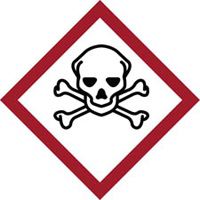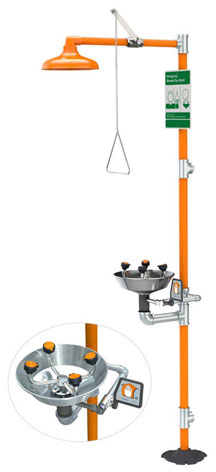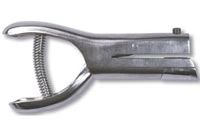



Find all of your laboratory and workplace safety supplies at Safety Emporium!
 Corrosive |
 Glossary Index |
 Cryogen |
| MSDS Topics |
Free Sites | FAQ's | Regulations | Glossary | Software | Suppliers |
| Books | Forum | Poll | Fun stuff | Quiz | Store | |
| Understand your MSDS with the MS-Demystifier | Search ALL our MSDS info | |||||
The Control of Substances Hazardous To Health (COSHH) regulations were first issued in 2002 and are administered by the Health & Safety Executive (HSE) of the United Kingdom. The regulations require employers to control exposure to hazardous substances in the workplace to prevent ill health.
Note: Do not confuse COSHH with CCOHS, which is the Canadian Centre for Occupational Health and Safety.

Get your GHS-compliant labels and signs from Safety Emporium.
Employer compliance with COSHH requires eight steps:
These regulations not only prevent injuries to employees, but can also improve productivity, reduce accidents, and lessen legal/regulatory liabilities. Like most workplace safety regulations, they benefit employers and employees alike.

Safety Emporium carries all kinds of eye/face washes, safety showers, drench hoses and more.
Under the COSHH regulations, a Substance Hazardous to Health is any of the following:
Examples include various fumes, dusts, vapors, mists, nanotechnology materials (which involve respirable particles smaller than 100 nm in diameter), gases and asphyxiating gases, and biological agents (germs). If the materials's packaging has any of the regulatory-required hazard symbols then it is classed as a hazardous substance.
Note: REACH replaced the now-obsolete CHIP regulations. Under CHIP, substances classifed as dangerous to health had ratings of T+ (very toxic), T (toxic), X (harmful), C (corrosive), or XI (irritant)
Substances not "hazardous to health" under COSHH include:
NOTE: We may collect a share of sales or other compensation from the links in the following list:
Substances to which COSHH applies will require an appropriate warning label and SDS per the REACH regulations which supplanted the earlier CHIP regulations. Much of the information that employers require for COSHH compliance can be found in the SDS's. You will find a wealth of information about COSHH in the Further Reading links below:

Get heavy duty hole punches and other fire safety accessories from Safety Emporium.
See also: CHIP, REACH, risk phrases, safety phrases, and the International Section of the SDS FAQ.
Additional definitions from Google and OneLook.
Entry last updated: Saturday, July 9, 2022. This page is copyright 2000-2025 by ILPI. Unauthorized duplication or posting on other web sites is expressly prohibited. Send suggestions, comments, and new entry desires (include the URL if applicable) to us by email.
Disclaimer: The information contained herein is believed to be true and accurate, however ILPI makes no guarantees concerning the veracity of any statement. Use of any information on this page is at the reader's own risk. ILPI strongly encourages the reader to consult the appropriate local, state and federal agencies concerning the matters discussed herein.